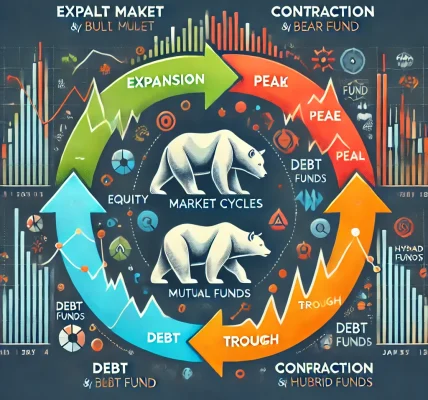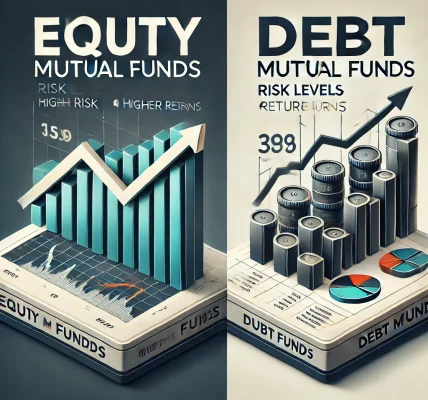Introduction
When investing in mutual funds, one of the most important factors that affect your overall returns is the expense ratio. Many investors overlook this aspect, focusing only on historical performance or fund manager reputation. However, a high expense ratio can significantly eat into your profits over time. In this article, we will explore what the expense ratio is, why it matters, how it affects your returns, and how to choose a mutual fund with a reasonable expense ratio.
What is Expense Ratio in Mutual Funds?
The expense ratio is the annual fee that a mutual fund charges its investors to cover operational costs, management fees, and administrative expenses. It is expressed as a percentage of the fund’s average assets under management (AUM).
Key Components of Expense Ratio:
- Management Fees – Paid to the fund manager for making investment decisions.
- Administrative Costs – Expenses related to accounting, record-keeping, customer support, and legal compliance.
- Marketing and Distribution Fees (12b-1 Fees) – Used to promote the fund and compensate brokers.
- Other Operational Expenses – Custodian fees, auditor fees, and regulatory costs.
For example, if a mutual fund has an expense ratio of 1.5% and an AUM of $1 billion, then $15 million is deducted annually to cover these costs.
Why Does Expense Ratio Matter?
The expense ratio directly impacts the net returns that an investor earns from a mutual fund. Even a seemingly small difference in the expense ratio can lead to significant differences in long-term returns due to compounding.
Impact of Expense Ratio on Returns:
- Lower Returns: The higher the expense ratio, the lower your take-home returns.
- Compounding Effect: Over time, high expenses can erode gains, reducing the compounding benefits.
- Comparison Across Funds: Actively managed funds often have higher expense ratios than passively managed index funds.
For instance, if two funds generate 10% annual returns but one has an expense ratio of 0.5% and another has 2%, the investor in the higher-cost fund effectively earns 8% while the lower-cost investor earns 9.5%.
Types of Mutual Funds Based on Expense Ratio
Different types of mutual funds have varying expense ratios depending on their management style and strategy.
- Index Funds & ETFs (Low Expense Ratio) – These passively managed funds track a market index, often having expense ratios below 0.5%.
- Actively Managed Funds (Higher Expense Ratio) – Require skilled fund managers and frequent trading, leading to expense ratios between 1% and 2.5%.
- Debt Funds (Moderate Expense Ratio) – Generally have lower costs than equity funds but higher than index funds, typically around 0.5% – 1%.
- Hybrid Funds (Varied Expense Ratio) – Depending on the equity-debt allocation, these funds have varying costs.
How to Evaluate and Minimize the Impact of Expense Ratio
- Compare Across Similar Funds: Look at the expense ratios of different funds within the same category.
- Choose Index Funds or ETFs: If you prefer low-cost investing, index funds generally offer lower expense ratios than actively managed funds.
- Look for Direct Plans: Mutual fund direct plans have lower expense ratios than regular plans since they do not include distributor commissions.
- Analyze the Long-Term Impact: Consider the effect of expense ratios over a 10-20 year horizon before investing.
Example Calculation of Expense Ratio Impact
| Investment | Expected Return | Expense Ratio | Net Return |
|---|---|---|---|
| $10,000 | 10% | 2% | 8% |
| $10,000 | 10% | 0.5% | 9.5% |
A lower expense ratio means more money stays invested, leading to higher gains over time.
Regulatory Guidelines and Expense Ratio Limits
To protect investors, regulatory bodies like the Securities and Exchange Board of India (SEBI) and the U.S. Securities and Exchange Commission (SEC) impose limits on expense ratios.
- In India: SEBI mandates that mutual funds cannot exceed 2.25% for equity funds and 2% for debt funds.
- In the U.S.: Index funds and ETFs often have expense ratios as low as 0.05%.
These regulations help ensure that fund houses do not charge excessive fees, maintaining fair competition in the market.
Conclusion
Expense ratios play a crucial role in determining mutual fund profitability. By understanding and comparing expense ratios, investors can make better investment choices that maximize returns. Always consider the long-term impact of fees and choose funds with a balance between performance and cost-effectiveness.
If you’re looking for sustainable wealth creation, prioritize funds with a low expense ratio to maximize your returns while minimizing unnecessary costs.



